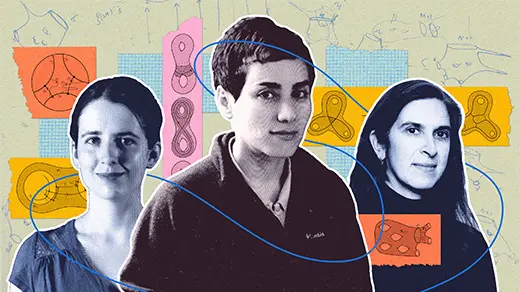What's up in
Mathematics
Latest Articles
Mathematical Beauty, Truth and Proof in the Age of AI
Mathematicians have started to prepare for a profound shift in what it means to do math.
Introducing The Quanta Podcast
Exploring the distant universe, the insides of cells, the abstractions of math, the complexity of information itself and much more, The Quanta Podcast will be a tour of the frontier between the known and the unknown.
New Proof Settles Decades-Old Bet About Connected Networks
According to mathematical legend, Peter Sarnak and Noga Alon made a bet about optimal graphs in the late 1980s. They’ve now both been proved wrong.
Where Does Meaning Live in a Sentence? Math Might Tell Us.
The mathematician Tai-Danae Bradley is using category theory to try to understand both human and AI-generated language.
A New Proof Smooths Out the Math of Melting
A powerful mathematical technique is used to model melting ice and other phenomena. But it has long been imperiled by certain “nightmare scenarios.” A new proof has removed that obstacle.
Three Hundred Years Later, a Tool from Isaac Newton Gets an Update
A simple, widely used mathematical technique can finally be applied to boundlessly complex problems.
‘Once in a Century’ Proof Settles Math’s Kakeya Conjecture
The deceptively simple Kakeya conjecture has bedeviled mathematicians for 50 years. A new proof of the conjecture in three dimensions illuminates a whole crop of related problems.
Years After the Early Death of a Math Genius, Her Ideas Gain New Life
A new proof extends the work of the late Maryam Mirzakhani, cementing her legacy as a pioneer of alien mathematical realms.
After 20 Years, Math Couple Solves Major Group Theory Problem
Britta Späth has dedicated her career to proving a single, central conjecture. She’s finally succeeded, alongside her partner, Marc Cabanes.








